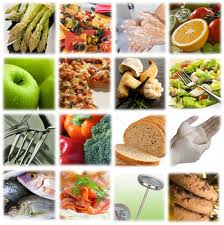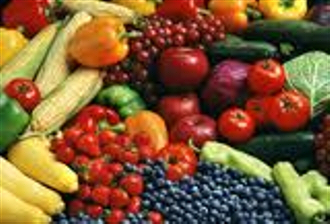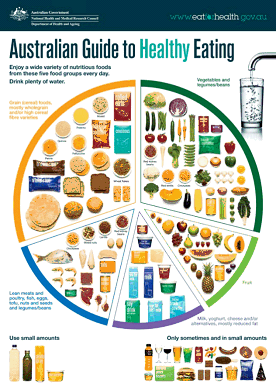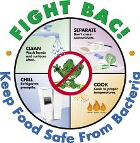Natural Health Foods
What is healthy Foods?



Healthy eating tips
Eating well plays an important part in maintaining good health. Below are eight practical tips that cover the basics of healthy eating and can help you make healthier choices:
- Base your meals on starchy foods as these give you energy.
Choose wholegrain varieties (or eat potatoes with their skins on) when
you can: they contain more fibre.
- Eat at least five portions of a variety of fruit and vegetables a day. Top 5 Health Foods you should eat a day: that count? for more information.
- Eat more fish. Eat at least two portions of fish every week,
including one portion of oily fish such as mackerel or sardines. If
you’re vegetarian and don’t eat fish, see five essential nutrients for vegetarians for more information on a healthy vegetarian diet.
- Avoid alot of saturated fat and sugar foods. See healthy food swaps for healthier choices.
- Eat less salt – no more than 6g a day for adults. For tips on how to do this, see Say no to salt.
- Get active and be a healthy weight. Use the healthy weight calculator to check if your weight is healthy.
- Drink plenty of water, about six to eight glasses of water (or other fluids) every day. To find out why this is important, see water and drinks.
- Don’t skip breakfast because it gives you the energy you need for the day. See five healthy breakfasts for ideas.
Five major food groups

The five food groups are:
- vegetables and legumes/beans
- fruit
- lean meats and poultry, fish, eggs, tofu, nuts and seeds, legumes/beans
- grain (cereal) foods, mostly wholegrain and/or high cereal fibre varieties
- milk, yoghurt, cheese and/or alternatives, mostly reduced fat.
These food groups make up the Australian Guide to Healthy Eating.
Choose a variety of foods
Eating a varied, well-balanced diet means eating a variety of foods from
each food groups daily, in the recommended amounts. It is also
important to choose a variety of foods from within each food group
because different foods provide different types and amounts of key
nutrients.
Choosing a variety of foods will help to make your meals interesting, so that you don’t get bored with your diet.
Occasional foods
Some foods do not fit into the five food groups because they are not
necessary for a healthy diet. These foods are called ‘discretionary
choices’ and they should only be eaten occasionally. They tend to be too
high in either energy (kilojoules), saturated fat, added sugars, added
salt or alcohol, and have low levels of important nutrients like fibre.
Examples of ‘discretionary choices’ or occasional foods are:
- sweet biscuits, cakes, desserts and pastries
- processed meats and fattier/salty sausages, savoury pastries and pies, commercial burgers with a high fat and/or salt content
- sweetened condensed milk
- ice cream and other ice confections
- confectionary and chocolate
- commercially fried foods
- potato chips, crisps and other fatty and/or salty snack foods including some savoury biscuits
- cream, butter and spreads which are high in saturated fats
- sugar-sweetened soft drinks and cordials, sports and energy drinks and alcoholic drinks.

Small allowance for healthy fats
Unsaturated fats are an important part of a healthy diet. The two main
types of unsaturated fats are monounsaturated fats (found in olive and
canola oil, avocados, cashews and almonds) and polyunsaturated fats like
omega-3 fats (found in oily fish) and omega-6 fats (found in safflower
and soybean oil and Brazil nuts). These fats can help reduce the risk of
heart disease and lower cholesterol levels when they replace saturated
fats in the diet.
The Australian Dietary Guidelines include a small allowance for healthy
fats each day (around 1–2 tablespoons for adults and less for children).
The best way to include healthy fats in your diet is to replace
saturated fat that you may currently be eating (such as butter and
cream) with a healthier, unsaturated fat option (such as polyunsaturated
margarine or olive oil).
Include the five food groups in your diet
t’s not hard to include foods from the five food groups into snacks and meals. Some suggestions include:
- Vegetables and legumes – raw or cooked vegetables can be used as a snack food or as a part of lunch and dinner. Salad vegetables can be used as a sandwich filling. Vegetable soup can make a healthy lunch. Stir-fries, vegetable patties and vegetable curries make nutritious evening meals. Try raw vegetables like carrot and celery sticks for a snack ‘on the run’.
- Fruit – this is easy to carry as a snack and can be included in most meals. For example, try a banana with your breakfast cereal, an apple for morning tea and add some berries in your yoghurt for an afternoon snack. Fresh whole fruit is recommended over fruit juice and dried fruit. Fruit juice contains less fibre than fresh fruit and both fruit juice and dried fruit, and are more concentrated sources of sugar and energy. Dried fruit can also stick to teeth, which can increase the risk of dental caries.
- Bread, cereals, rice, pasta and noodles – add rice, pasta or noodles to serves of protein and vegetables for an all-round meal. There are many varieties of these to try. Where possible, try to use wholegrains in breads and cereals.
- Lean meat, fish, poultry, eggs, nuts, legumes and tofu – these can all provide protein. It’s easy to include a mixture of protein into snacks and meals. Try adding lean meat to your sandwich or have a handful of nuts as a snack. You can also add legumes to soups or stews for an evening meal.
- Milk, yoghurt and cheese – try adding yogurt to breakfast cereal with milk, or using cottage cheese as a sandwich filling. Shavings of parmesan or cheddar can be used to top steamed vegetables or a salad. Use mostly reduced fat products.
Serving sizes of vegetables and legumes/beans
One standard serving of vegetables is about 75 g or:
- ½ cup cooked vegetables
- ½ cup cooked dried or canned beans, peas or lentils
- 1 cup salad vegetables
- ½ cup sweet corn
- ½ medium potato or other starchy vegetables (such as sweet potato)
- 1 medium tomato.
Serving sizes of fruit
One standard serving of fruit is about 150 g or:
- one medium piece (apple, banana, orange, pear)
- two small pieces (apricots, plums, kiwi fruit)
- 1 cup diced, cooked or canned fruit (no added sugar).
- 125 ml (1/2 cup) fruit juice (no added sugar)
- 30 g dried fruit (such as 4 dried apricot halves, 1½ tablespoons sultanas).
Serving sizes of grain (cereal) foods
Choose mostly wholegrain and/or high cereal fibre varieties of grain foods.
One serve equals:
- one slice of bread (40 g)
- ½ medium roll or flatbread (40 g)
- ½ cup cooked rice, pasta, noodles, barley, buckwheat, semolina, polenta, bulgur or quinoa (75-120 g)
- ½ cup cooked porridge (120 g)
- ¼ cup muesli (30 g)
- 2/3 cup breakfast cereal flakes (30 g)
- 3 crispbreads (35 g)
- 1 crumpet (60 g) or small English muffin or scone (35 g)
- ¼ cup flour (30 g)
Serving sizes of lean meats and poultry, fish, eggs, tofu, nuts and seeds and legumes/beans
One serve equals:
- 65 g cooked lean red meat (such as beef, lamb. pork, kangaroo), ½ cup lean mince, 2 small chops, 2 slices of roast meat (about 90-100 g raw weight)
- 80 g cooked poultry such as chicken or turkey (about 100 g raw weight)
- 1 cup (150 g) cooked dried or canned beans, lentils, chick peas or split peas
- 100 g cooked fish fillet (about 115 g raw weight) or 1 small can of fish
- two large eggs (120 g)
- 1 cup (150 g) cooked dried or canned legumes or beans, such as lentils, chickpeas or split peas (no added salt)
- 170 g tofu
- 30 g nuts or seeds, or nut/seed pastes(no added salt), such as peanut or almond butter, tahini.
Serving sizes of milk, yoghurt and cheese
When choosing serves of milk, yoghurt and cheese or alternatives, choose mostly reduced fat.
One serve equals:
- 1 cup (250 ml) fresh, long-life or reconstituted powdered milk
- ½ cup (120 ml) evaporated unsweetened milk
- 2 slices (40 g) hard cheese (such as cheddar)
- ½ cup (120 g) ricotta cheese
- ¾ cup or one small carton (200 g) of yoghurt
- 1 cup (250 ml) soy, rice or other cereal drink with at least 100 mg of added calcium per 100 ml.
Serves for children and adolescents daily
Almost all fruit and vegetables count towards your 5 A DAY, making it easier than you may think to get your recommended amount each day.
Fruit and vegetables don't have to be fresh to count as a portion. Nor do they have to be eaten on their own: they also count if they're part of a meal or dish.
To find out how much is in a portion, see 5 A DAY portion sizes.
What counts towards 5 A DAY?
As well as fresh fruit and vegetables, the following all also count towards your 5 A DAY.
- Fruit and vegetables cooked in dishes such as soups, stews or pasta dishes.
- Beans and pulses. These only count as one portion a day, no matter how many you eat. That's because although they are a good source of fibre, they contain fewer nutrients than other fruits and vegetables.
Frozen and canned fruit and veg
- Frozen fruit and vegetables.
- Tinned or canned fruit and vegetables. Buy the ones tinned in natural juice or water with no added sugar or salt.
- Dried fruit, such as currants, dates, sultanas and figs.
- Fruit and veg in convenience foods, such as ready meals and shop-bought pasta sauces, soups and puddings. Some ready-made foods are high in salt, sugar and fat, so only have them occasionally or in small amounts. You can find the salt, sugar and fat content of ready-made foods on the label. For more information, see Food labels.
Drinks and 5 A DAY
- One glass (150ml) of unsweetened 100% fruit or vegetable juice. Juice counts as a maximum of one portion a day, even if you have more than one glass. This is mainly because juice contains less fibre than whole fruits and vegetables. Crushing fruit into juice also releases the sugars contained in the fruit, which can cause damage to teeth.
- A smoothie containing all of the edible pulped fruit and/or vegetable may count as more than one portion but this depends on how it’s made. For more details, see 5 A DAY FAQs.
Do potatoes count towards 5 A DAY?
No. Potatoes are a starchy food and a great source of energy, fibre, B vitamins and potassium.
In the UK we get a lot of our vitamin C from potatoes. Although they only contain between 11-16mg of vitamin C per 100g of potatoes, we generally eat a lot of them.
When eaten as part of a meal, potatoes are generally used in place of other sources of starch, such as bread, pasta or rice. Because of this, they don't count towards your 5 A DAY.
Other vegetables that don't count towards your 5 A DAY are yams, cassava and plantain. They are also usually eaten as starchy foods.
Sweet potatoes, parsnips, swedes and turnips do count towards your 5 A DAY, because they are usually eaten in addition to the starchy food part of the meal.
Potatoes play an important role in your diet, particularly if they aren't cooked with salt or fat, even if they don't count towards your 5 A DAY.
They're also a good source of fibre, so leave the skins on where possible to keep in more of the fibre and vitamins. For example, if you're having boiled potatoes or a jacket potato, make sure you eat the skin too.
5 A DAY: a wide variety
To get the most benefit from your five portions, eat a wide variety of fruit and vegetables.
For 5 A DAY recipe ideas, see 5 A DAY recipes.
For more information about a healthy, balanced diet, see Food and diet.
